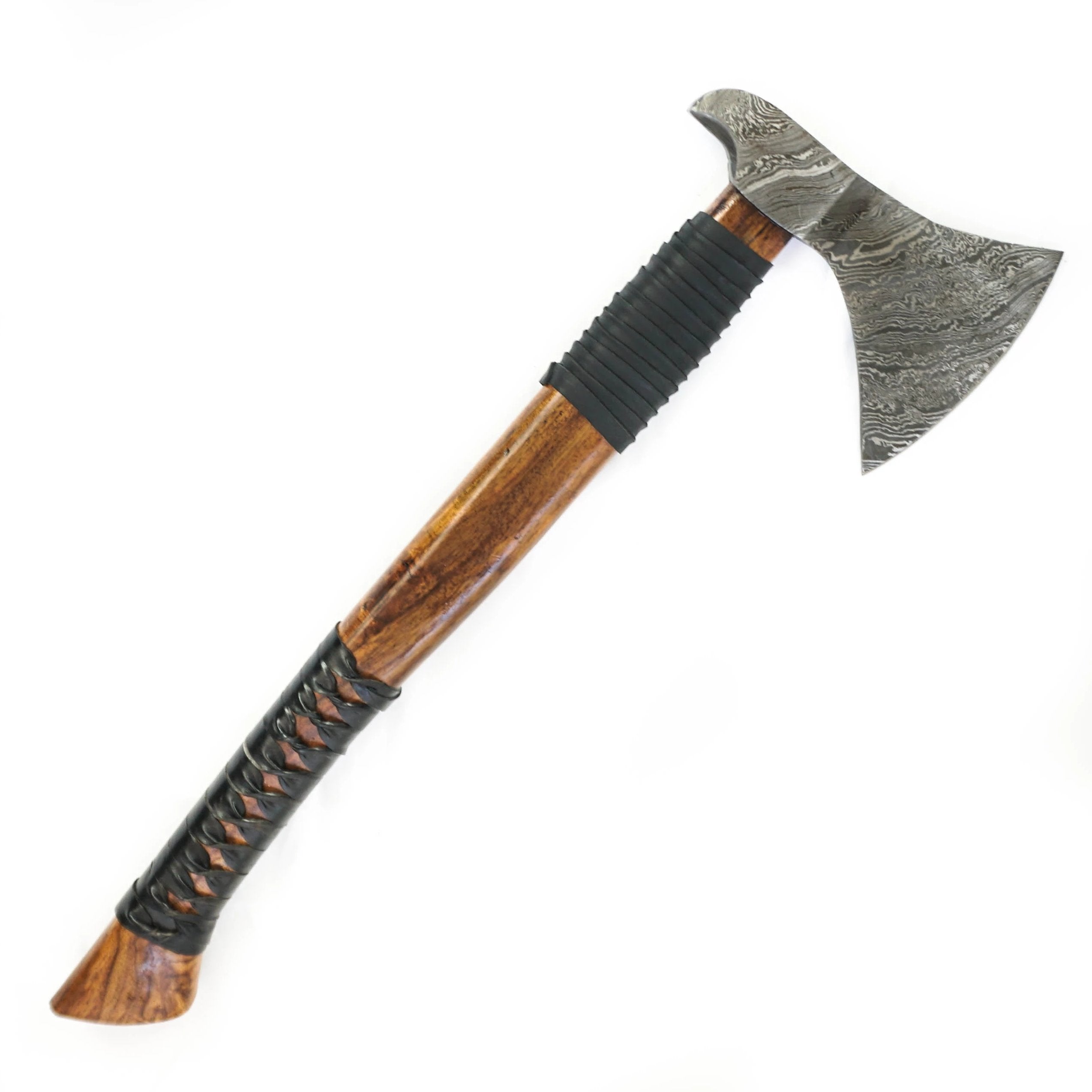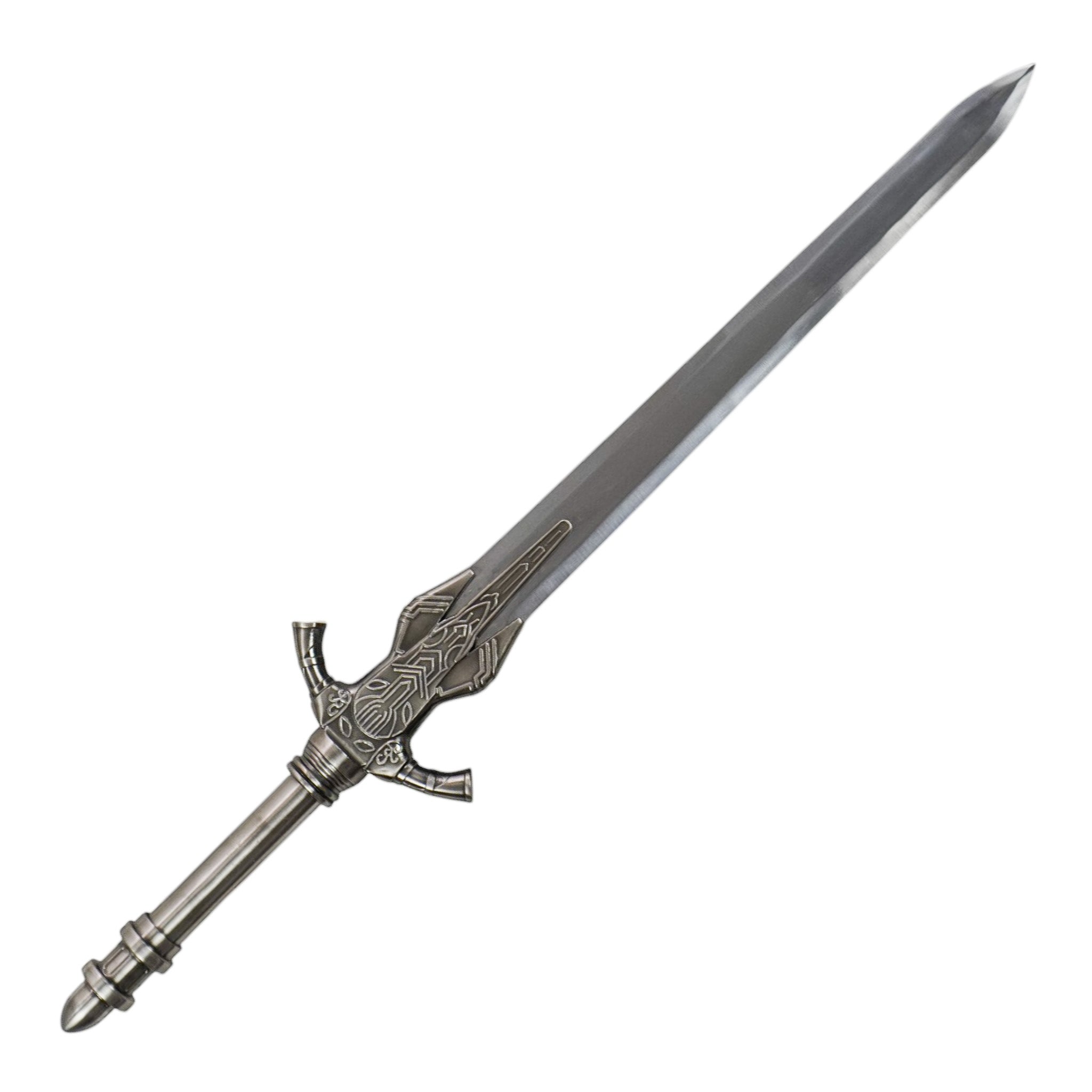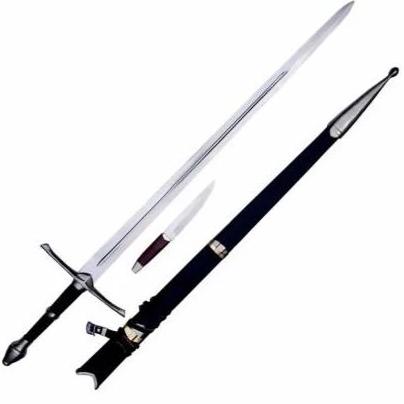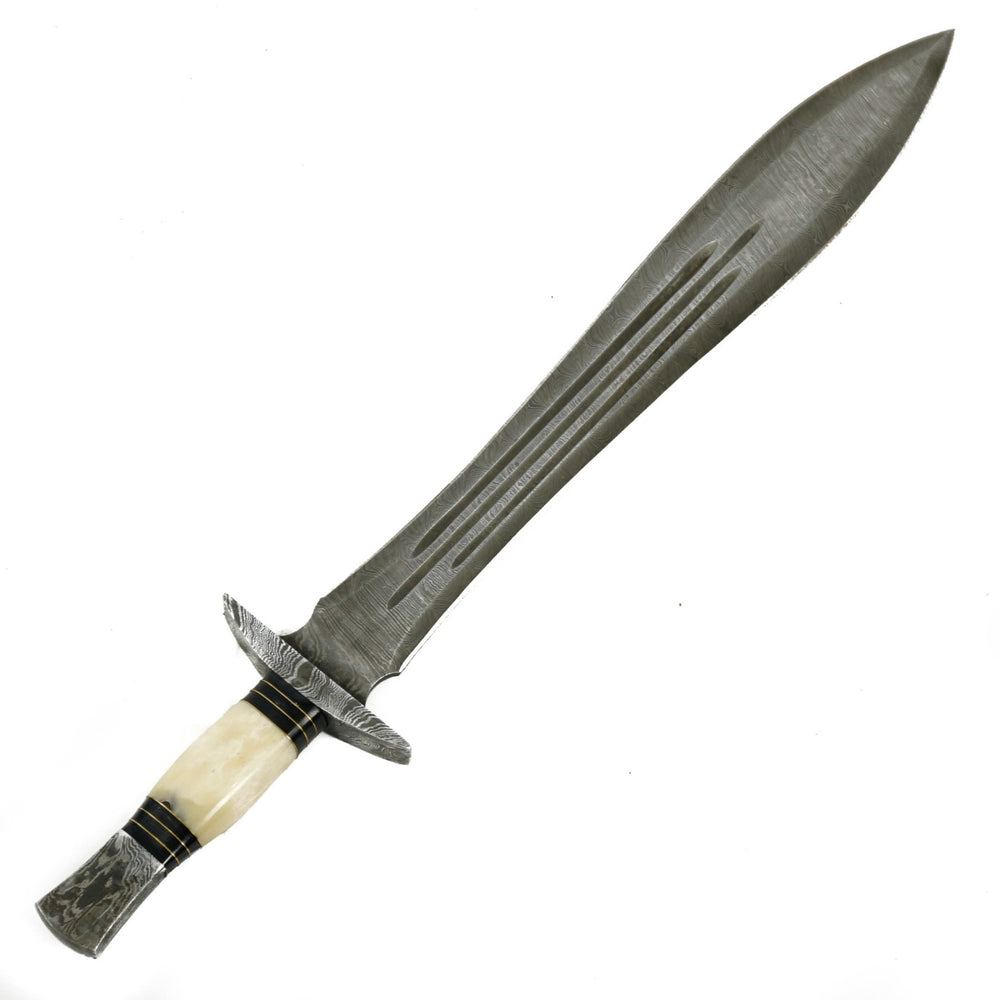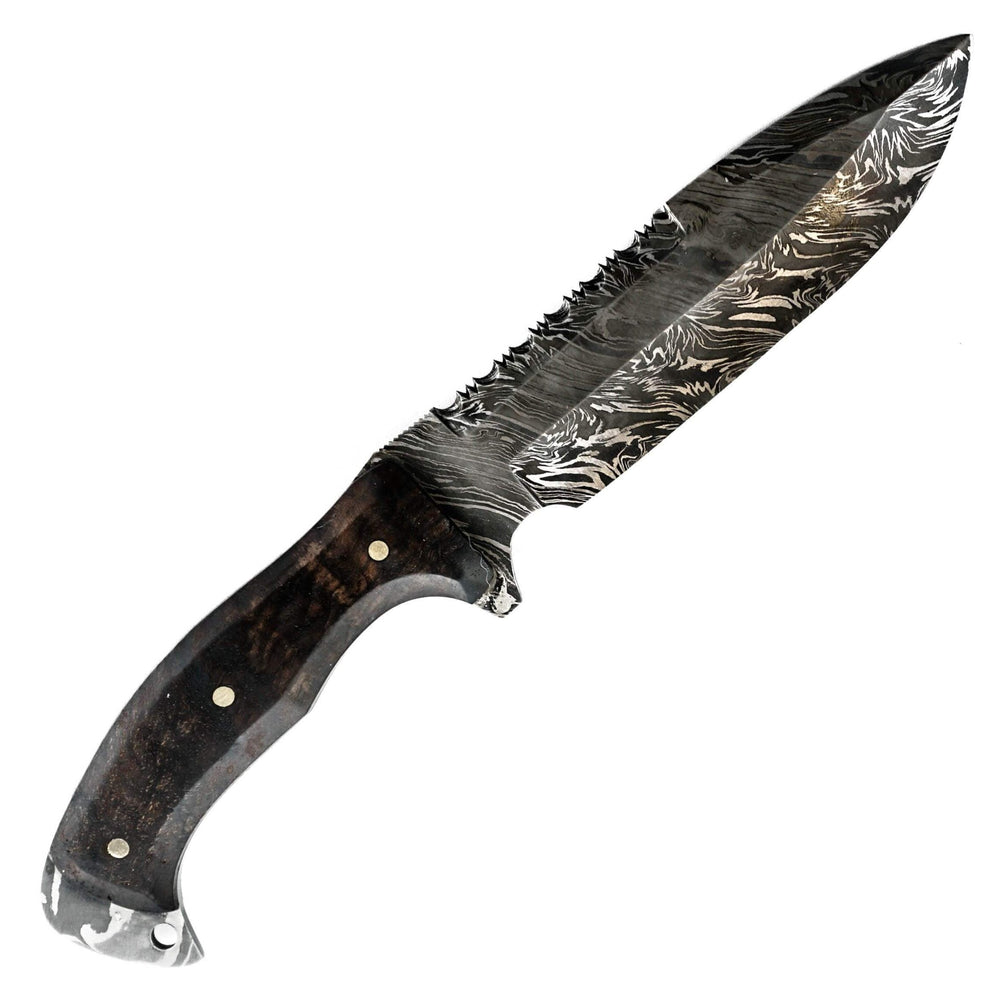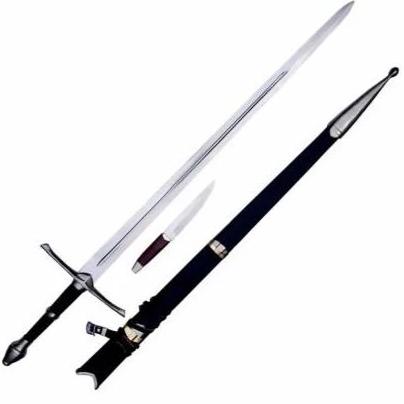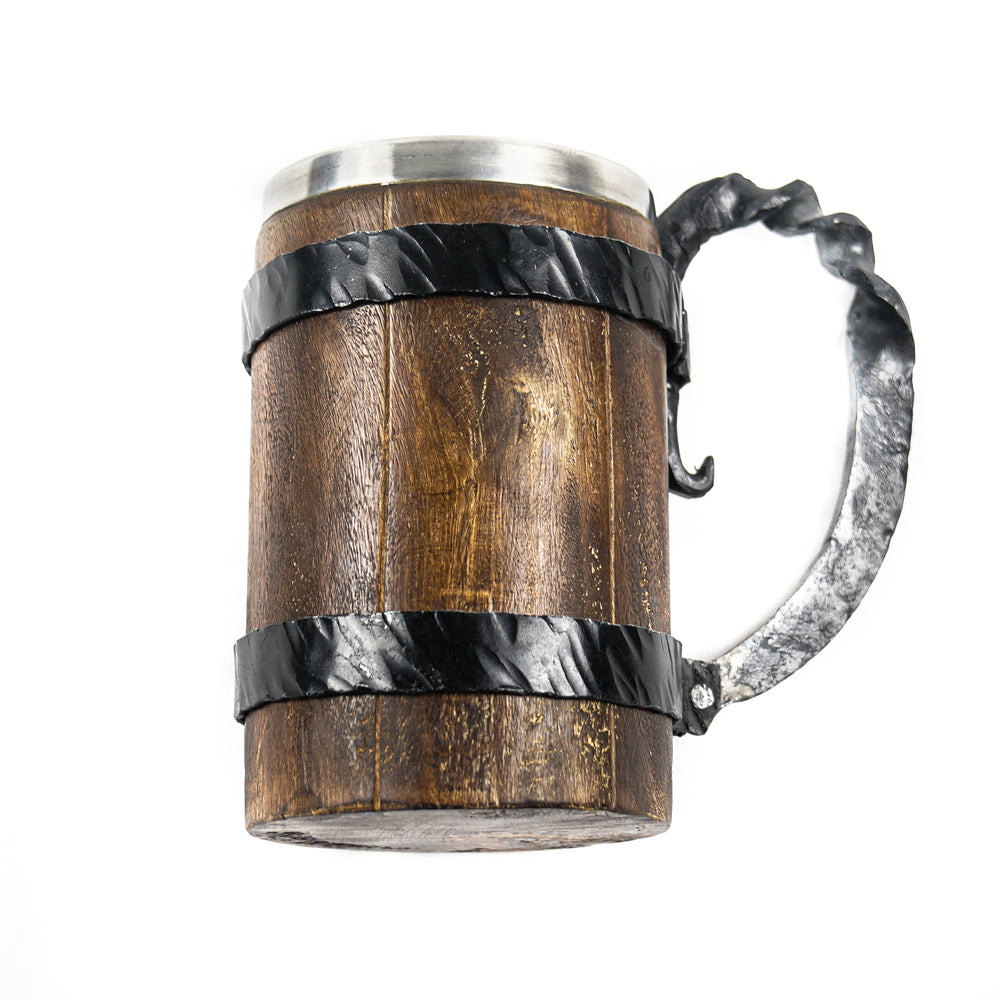Forged in the Crucible: Unraveling the Legacy of Iron Age Blades
Iron Age swords became quiet witnesses and active participants in the broad mosaic of human civilization in the vast chronicles of time, when empires came and went like regular tides in history. This investigation goes beyond the strict confines of historical narratives, probing the vital core of artistry, cultural relevance, and the unwavering spirit that gave rise to these blades. Come along on a fascinating voyage through the Iron Age eras, when swords evolved from being tools of battle to deep symbols of strength, creativity, and the unceasing advancement of human intellect.
The Genesis of Iron: A Metallurgical Renaissance
Around 1200 BCE, when the Iron Age spread, the ancient world saw a metallurgical revolution. With its increased abundance and accessibility over its predecessors, iron brought in a new era of weaponry. Swords, which were formerly primarily made of bronze, embraced iron's transforming power, signaling a significant turning point in the history of weaponry.
Swordcraft became even more difficult due to the alchemy of iron forging, which was more complex than the metallurgy of the Bronze Age. Experts in the art of forging swords out of iron, blacksmiths not only revolutionized warfare but also left a lasting impression on the societies in which they were used.
A multitude of designs surfaced in the wide variety of Iron Age swords, all of which attested to the combination of form and function. The creativity of Iron Age swords held the distinct impressions of the cultures who made them, in contrast to the homogeneity of previous bronze swords.
The Celtic La Tène swords were considered marvels of Iron Age art because of their elaborate swirling patterns. In the meantime, the short, double-edged Roman gladius demonstrated a painstaking attention to detail and was designed for close-quarters fighting. These blades were more than just weapons; they were cultural canvases that etched tales of inventiveness, individuality, and fighting prowess with every blow of the hammer.
The Gladius: Pillar of Roman Legions
Throughout the core of the Roman Empire, the gladius became a legendary representation of military power. The gladius, a short, double-edged weapon meant for thrusting, served as the spine of Roman legions and was every bit as disciplined and potent as the warriors who carried it.
The gladius represented the ideals of Roman combat and was more than just a weapon for conquest. Its design demonstrated a mix of military strategy and technological innovation, ideal for quick and deadly strikes in the close formations of legionaries.
La Tène Elegance: Celtic Swords as Artistic Expressions
Swords from the Celtic Iron Age of La Tène culture had a distinct style than the disciplined strength of the Roman gladius. These swords showcased the uniqueness and artistic flair of Celtic craftsmanship with their long, slender forms and intricate hilts.
The La Tène swords were more than just tools of fighting; they were symbols of the warriors' Celtic identity. These blades, adorned with elaborate patterns and flowing motifs, were personal declarations that connected the warrior, their clan, and the Iron Age's essence.
During the Migration Period, Germanic tribes acquired Iron Age swords as the Roman Empire began to decline. People's migrations brought together various cultural influences, which shaped the purpose and design of swords during this turbulent period.
Swords from the migration era, with their larger blades and unique hilts, represented the shifting political winds. Every sword told a story about its travels, illustrating the dynamic interplay of civilizations and the changing character of battle throughout Europe.
Far Eastern Mastery: The Katana and Dao
Swords from the Iron Age left their traces on history in the West, but the East left its own legacy. Despite having different designs, the Chinese dao and the Japanese katana were similar in that they combined lethality and creativity.
With its single cutting edge and bent blade, the katana came to be associated with samurai. It was more than just a weapon; it was a representation of Bushido's discipline and honor. The dao, a multipurpose single-edged sword, demonstrated the martial skill of Silk Road warriors and the inventiveness of Chinese metalworking.
Rituals and Symbolism: Iron Age Swords Beyond Warfare
Swords from the Iron Age were used for more than just fighting; they were also essential to rites, rituals, and cultural symbols. Swords were thrown into rivers and bogs by the Celts as acts of sacrifice to the gods or ritual significance.
These acts of sacrificial worship indicated a closer relationship between the spiritual world and Iron Age cultures. Swords, which had once been used in violent conflicts, were now used as channels of power, connecting the holy and the mortal in a symbolic dance that reverberated through the ages.
Sword forging during the Iron Age was a technological symphony. One popular technique was the bloomery process, which involved smelting iron ore with charcoal. Swordcraft was raised to new heights by the invention of pattern welding, though.
In pattern welding, various iron types were layered to increase the flexibility and strength of the blade. The ensuing, frequently perceptible to the unaided eye patterns on the blade became a mark of quality workmanship. With each blade providing a visual narrative of their manufacture, this method not only enhanced the swords' usefulness but also elevated them to the status of artwork.
The Twilight of Iron: Transition to the Medieval Era
The swords that had come to define an age were faced with an uncertain future as the Iron Age faded. The use, meaning, and appearance of these blades changed as we entered the Middle Ages. The Iron Age sword tradition was carried into a new era of battle by the emergence of the famous broadswords and longswords used by medieval knights.
Despite being unique, the medieval swords carried over the technological advancements from their Iron Age forebears. Swords from the Iron Age continued on their journey, changing to fit the changing dynamics of medieval warfare and social structures.
Even though the final Iron Age blade was used in combat millennia ago, its influence can still be seen in modern culture. Beyond historical intrigue, these antique blades are held in high regard in literature, movies, and even historical reenactments.
Films like "Gladiator" and "King Arthur" vividly depict epic fights that capture the essence of Iron Age swords and bring them to life on screen. Iron Age swords are still studied, collected, and replicated by enthusiasts and historians alike, continuing to fuel the heritage of these weapons.
Crafting Iron Age Swords Today: Artistry and Tradition
A committed group of artisans uses a combination of skill and heritage to create Iron Age swords in a technologically advanced environment. These expert craftspeople honor the methods of the past by painstakingly re-creating the designs, forms, and symbols that typified Iron Age swordcraft.
Modern Iron Age swords serve as links between the past and the present, whether for historical reenactment, collection, or as a tribute to the timeless appeal of these blades. By employing the hammer and anvil, artisans revitalize age-old methods, guaranteeing that the influence of Iron Age swords endures until the present day.
The sound of swords clashing reverberates through time as we set off on this retrospective journey through the chronicles of the Iron Age. Swords from the Iron Age, honed in the furnace of invention, used in battle, and preserved in cultural customs, have had a lasting impression on human history.
Every blade contains a chapter, a tale just waiting to be unlocked. Iron Age swords have left a lasting legacy that extends beyond the corroded relics of archeological discoveries to the cultural harmony that lingers on the strings of our shared memory. Looking back at these relics from a bygone era makes us a part of their continuing story, a monument to the perseverance of people who forged these swords in the furnace of the Iron Age.

